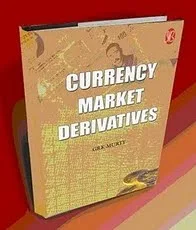With India
Not any longer. External trade volumes have grown significantly and at a significant rate. The number of companies foraying into overseas markets and availing themselves of cross-border capital and funding options has shot up in recent years. The increased volumes of India
The book seeks to address some basic questions like what currency markets are, what forex risk is, and how to manage it, apart from dwelling, in reasonable detail, on the features of derivative products in the currency markets, and does so successfully. The writer’s years of experience as a banker ensure that the treatment is not just textbook-like, but packs in live illustrations to provide a much-needed hands-on perspective.
It is a well-written and fairly comprehensive account, which should be useful to students of various courses, studying forex and forex markets as a subject, and to practicing managers. Senior executives seeking to acquire a clearer understanding of forex market and the risk management practices relating to that market would find that the book would meet their requirements as well.
The book is divided into four sections: Global forex markets, Exchange rate behaviour, Forex risk, and Derivatives. The book’s main thrust is, of course, on derivatives, with almost half the book devoted to covering them in broad detail, with the other half providing the preparatory background much-needed for an understanding of the rationale for various derivative products and an analysis of their features.
The section on global forex markets deals with currency markets and their evolution and gives a lucid exposition of market mechanics, players and dealing-room operations and provides a bird’s eye-view of forex trading. The well-conceived and informative charts, boxes and tables backing up the easy-to-read text make for clarity and sustain the reader’s interest.
The basic theories of exchange rate determinants and the imperatives of exchange rate management are covered as a separate section of the book, which explains the why and the how of exchange rates movements, besides examining the implications of issues such as capital account convertibility.
The chapters on forex risk management deal adequately with the conceptual framework governing modern forex risk management practices and strategies. The section is copiously illustrated with real life stories and examples.
The book has separate chapters for derivatives such as forward contracts, futures, options, and swaps, covering in each case the concept behind the product and demystifying the related terminology.
The book is designed to meet a felt need in the market for a comprehensive primer on the subject and successfully elucidates some much used (though not necessarily well-understood) jargon of the currency market and the nuances of products fast becoming popular in India and set to become even more popular in the coming years.
The book is beautifully produced. It is extensively laced with anecdotes. With its generous doses of examples from real life situations to illustrate the points made, the book offers a refreshingly modern approach and presentation that makes it an easy and compelling read. It is an ideal first book to read on derivative products in the forex markets.
M Hanumantha Rao
Former Deputy General Manager,
State Bank of India

No comments:
Post a Comment